A characteristic of a charming city must be the possibility of enjoying cozy cafes that maintain a traditional atmosphere or have an outstanding history.
And I tell you that in a city as charming as Prague could not miss the charming cafes.
In last visit of the czech capital I had the opportunity to meet some of the most outstanding of it, which discovered me Jitka a expert Prague tourist guide.
In order to plan your own trip to the Czech capital, below I am going to introduce you five historic and traditional cafes in Prague.
All the information in detail
Municipal House art nouveau café
La Municipal House It is one of the most outstanding buildings that you can see in your trip to Prague.
It is an iconic building in the history of the Czech Republic and in it you find the Smetana Room, one of the most prominent concert halls in the Czech capital.
you can't stop visit the Municipal House to at least know your coffee with decoration art nouveau, where above all its large lamps will catch your attention.
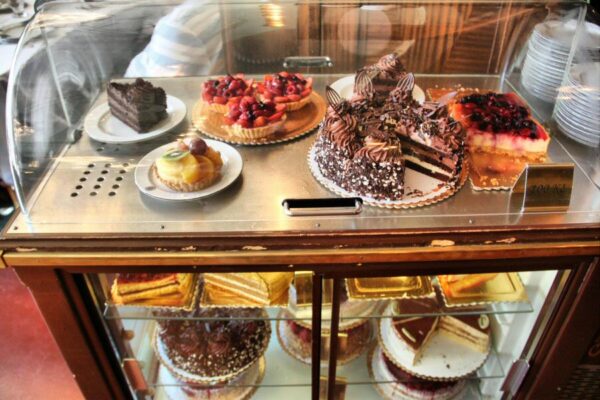
At the Municipal House you can also enjoy a French restaurant and a Czech tradition tavern.
You can find this historic cafe on the edge of the neighborhood of La Old City, Together with the Powder Tower, and not far from the Wenceslas Square.
Prague Imperial Café, modernist decoration
From the decoration art nouveau to the curious decoration of the Prague Imperial Cafe.
Not far from the Municipal House you find a decoration where the protagonists are ceramics that mix floral and animal ornamentation, with some reminiscence of the oriental art.
El Imperial Art Deco Hotel It was built in 1914, and stands out for its style exterior facade art deco, with cubist elements, with an interior where abound modernist style mosaics.
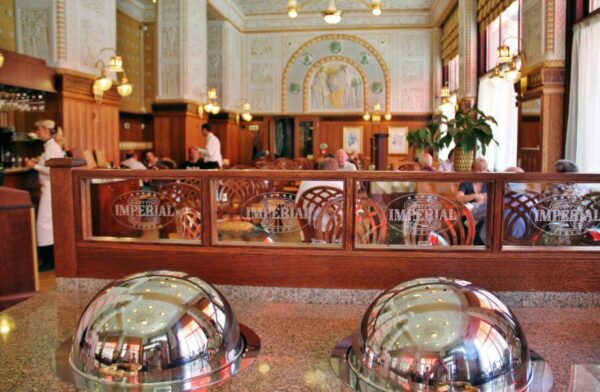
The hotel and the Prague Imperial Cafe They have as a precedent an inn that was built in 1730 with the name of the Black Eagle. and then in 1840 became the Black Eagle Hotel.
One of the most prestigious owners of this hotel during the 19th century was the prestigious Czech writer and politician Vojtech Naprstek, fond of traveling and collecting objects brought back from them.
Finally, in 1913, this first hotel was demolished as part of an urban remodeling plan for Prague.
It was then that the luxurious Imperial Art Deco Hotel, with its striking decorative style.
It was soon frequented by famous people from the city, such as the writer Franz Kafka and the composer Leos Janacek.
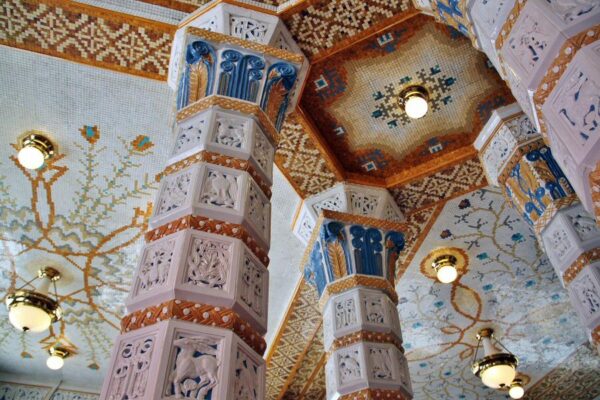
As a curiosity, the hotel was very frequented by German troops during the Second World War, and as a consequence, it was abandoned by Czech visitors.
But after the war, the hotel and its café regained its prestige among the population of Prague, being widely used by the trade union association.
Finally, in 1980 the hotel was closed.
But now when you visit Prague you can see a completely renovated hotel, which was rebuilt between 2005 and 2007, which is again considered one of the most luxurious and prestigious luxury hotels in the Czech capital.
ORGANIZE your TRIP
- Don't forget your TRAVEL INSURANCE with a 5% discount
- Book the HOTEL for your trip
- RENT a CAR for your trip
- The best TOURS and EXCURSIONS in Spanish
- NO-LINE TICKETS for museums and monuments
- Best FREE TOURS around the world
- Book your TRANSFER from the airport
- eSIM card with INTERNET at the best price
When you enter the Imperial Coffee, its ceilings, walls and columns covered in modernist style mosaics, with floral and animal ornamentation, which have certain reminiscences of both oriental and Arabic art.

The curious tradition of the Saturnin dish
Another curiosity of this hotel was the tradition during the communist era of the so-called Saturnin plate.
It consisted of the students, for an amount that did not reach 2.000 Czech crowns, buying a plate full of buns from the previous day, which were already hardened, and which they threw to whoever they wanted.
El Saturnin plate It was sold to people over 21 years of age, who were also not affected by having drunk too much alcohol.
This tradition was maintained until very recently, in 2004, so now you can go calmly and have a coffee at the Imperial Coffee, without the fear of buns being thrown.

Great Eastern Café, cubist decoration
Very close to the aforementioned Powder Tower, on the street that leads you to the old town square, Do you have the Great Eastern Coffee, which has a very special characteristic, which I had not seen until now in any building.
In this cafe decorated in cubist style.
El Great Eastern Coffee It opened in 1912 in a building known as the House of the Black Virgin Mary, and is the only contribution to cubist movement in the Czech Republic.
Designed by the architect Josef Gocar, Great Eastern Coffee not only has the cubist style architecture, but also the furniture, such as the bar or chairs, or the tableware and glassware.
The history of this café was really short, as it closed in 1922.
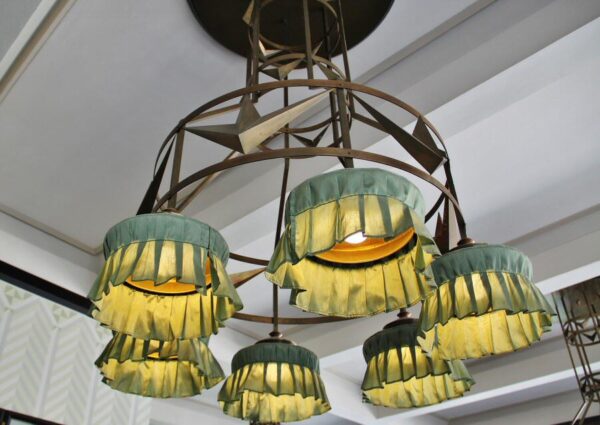
However, this curious establishment was recently reopened, in 2005, and is now an elegant cafe that is a true tribute to cubism.
His specialty is Great Eastern Coffee Cake, but if you don't dare with it, during your visit you can take a coffee with Baccardi rum or a simpler cappuccino coffee.
Café Slavia, meeting place for politicians and artists
Located in front of the National Theatre, Slavia Cafe It was opened in 1884 coinciding with the opening of said cultural institution, with the aim of becoming a meeting place for artists and other personnel who came to the aforementioned theater.
El Slavia Cafe, located in the neighborhood Nova Mesto of the modern city of Prague, on the corner of the Národní street with the walk that runs next to the río Moldava.
From its interior, and through its large windows, you can see Prague Castle, a vision that is one of the great attractions of going to have a coffee at Slavia.
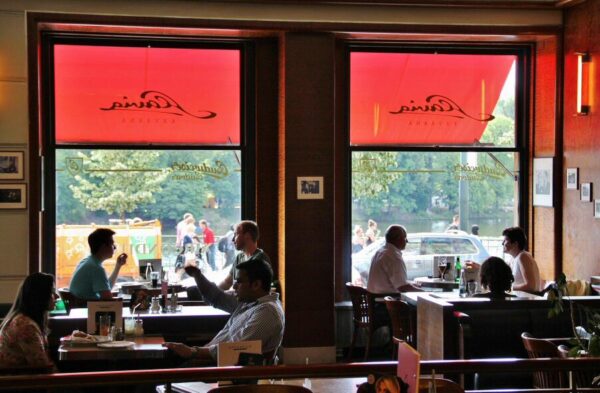
Of course, you have to choose between 45 different coffee specialties, the main one being coffee with absinthe.
Painting “The Absinthe Drinker” at Café Slavia in Prague
Precisely, one of the icons of Prague Cafe Slavia it's the great painting The absinthe drinker that covers one of the walls of your living room.
It is actually a copy of a famous work by the Czech artist Viktor Oliva.
In the painting you can see the typical round tables that were in the cafeteria at the time, and the style chairs Thonet that still persist in their halls.
Don't forget your Travel Insurance
Are you organizing your trip or getaway? Don't leave without take out your travel insurance before, and here we explain why. If you hire it with us, you have a 5% discount
I remind you that the absinthe It is a drink with an anise flavor and a very high alcohol content. Light greenish in color, at the beginning of the 20th century it was considered National Beverage of France.
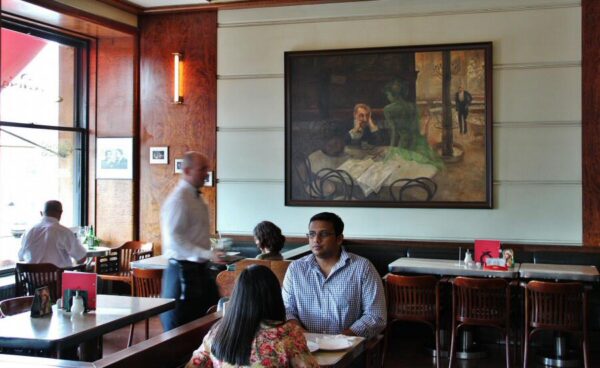
But it was also very controversial because excessive consumption can cause hallucinations.
The truth is that at that time it became a very popular drink among artists.
The list of celebrities who have passed through Slavia Cafe It is very wide.
Among politicians, from Vaclav Havel, writer and first president of the current Czech Republic, to Hillary Clinton.
Among the writers, Wheeler, gross man o seifer; and among the artists, himself Viktor Oliva.
When planning your visit to Café Slavia, during your stay in Prague, keep in mind that between 17 and 23 p.m. there is a pianist who entertains their rooms.
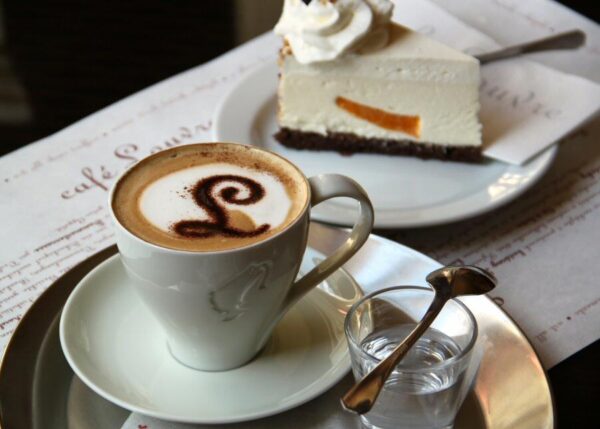
Café Louvre, from Kafka to Einstein
Open since 1902, not far from the aforementioned Café Slavia, the Cafe Louvre It has also been a meeting place for characters and artists such as Kafka, or scientists like Einstein during his stay as a professor at the prague city.
After a gray period during communist era, in 1992 the Cafe Louvre It was renovated and has regained its splendor of the first decades of the 20th century.


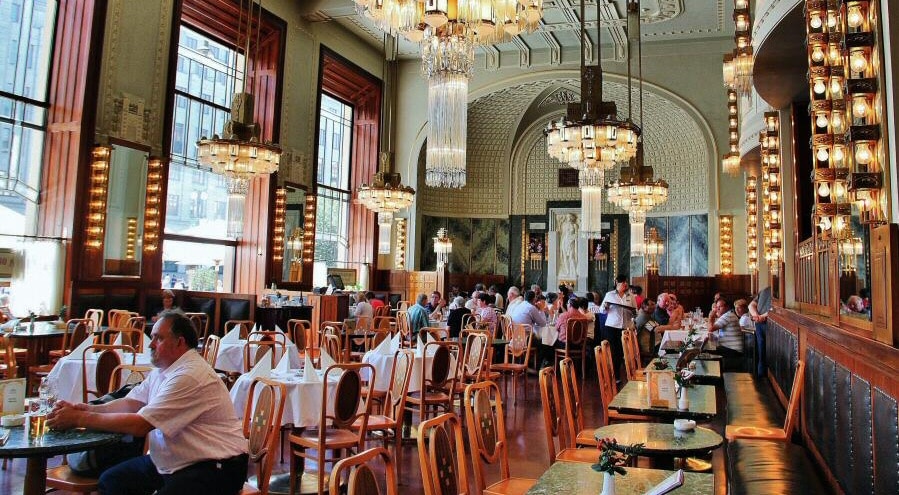
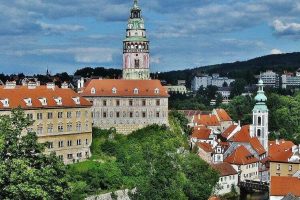

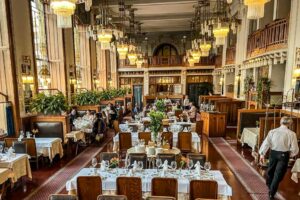











Wonderful information